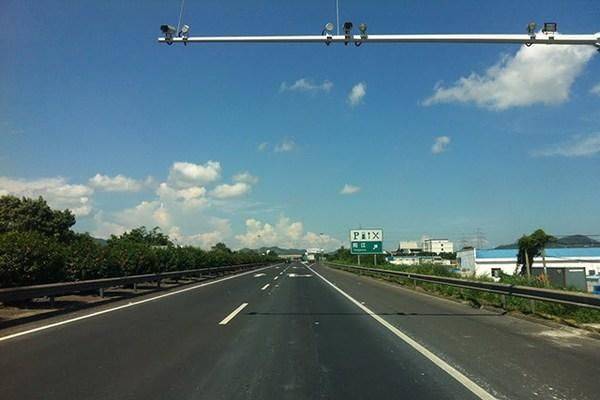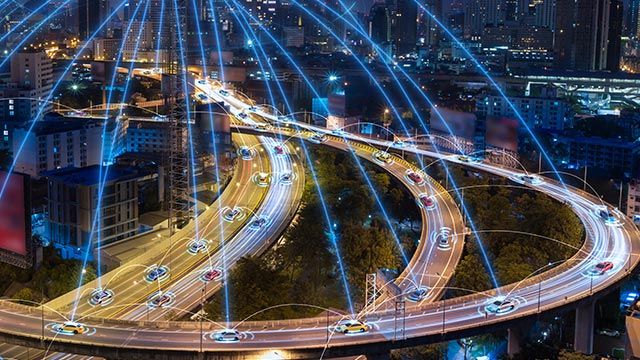Application of Speed Enforcement Radar in Highway Safety Management
With the rapid growth of car ownership, traffic safety management is facing unprecedented challenges. As an important channel connecting cities, the safety of highways directly affects the safety of people’s lives and property. As an advanced technological means, speed enforcement radar has been widely used in many countries and regions, greatly improving the safety management level of highways. This article will delve into the technical characteristics, working principles, and specific applications of speed enforcement radar in highway safety management.

Technical characteristics of speed enforcement radar
1. Working principle
Speed enforcement radar mainly measures vehicle speed based on the Doppler effect. When radar waves encounter moving objects, the frequency of the echo will change due to relative motion. By measuring the frequency difference between the emitted wave and the echo, the speed of the vehicle can be calculated. In addition, modern radar systems also have target recognition capabilities, which can distinguish vehicle types and sizes, thereby reducing misjudgments.
2. Technical advantages
Real time performance and instant feedback
Speed enforcement radar can quickly capture the speed of vehicles, ensuring timely enforcement. When speeding occurs, the system can immediately sound an alarm, and enforcement personnel can take quick action to reduce the potential risk of traffic accidents.
High precision and impartiality
Modern speed radar adopts advanced technology and has high-precision speed measurement capability, which can effectively reduce errors caused by human factors. This makes the enforcement process more fair and reduces disputes caused by speed measurement errors.
Cost effectiveness
Through an automated speed measurement system, enforcement agencies can reduce their reliance on manual enforcement, thereby lowering labor costs. At the same time, reducing traffic accidents and related losses caused by speeding brings greater social benefits.
Data accumulation and analysis
The speed enforcement radar can continuously accumulate traffic data, providing an analytical basis for traffic management departments. These data can be used for trend analysis, traffic flow prediction, and traffic policy formulation, thereby improving the overall level of traffic management.
Technology integration and intelligence
With the development of artificial intelligence and big data technology, speed enforcement radar can be integrated with other traffic management systems to achieve more intelligent traffic management. For example, through data analysis, traffic congestion can be predicted, signal lights can be adjusted in advance, and traffic flow can be optimized.

Application in Highway Safety Management
1. Overspeed monitoring and enforcement
Speed enforcement radar can be deployed on key sections of highways, such as tunnel entrances, sharp turns, uphill and downhill sections, etc. By continuously monitoring the speed of vehicles, the radar system can automatically identify speeding vehicles and record their license plate numbers, degree of speeding, and timestamps. These pieces of information will be sent to the backend database, and enforcement officers can punish speeding offenders based on the records.
2. Traffic flow statistics and analysis
Speed enforcement radar can not only be used to monitor speed, but also to count traffic flow. By analyzing the speed and quantity of passing vehicles, the distribution of traffic flow during different time periods can be analyzed, providing scientific basis for traffic planning and management. In addition, these statistical data can also be used to evaluate road capacity and predict traffic congestion.
3. Accident prevention and emergency response
The speed enforcement radar system can promptly detect speeding situations and issue warnings to drivers through electronic displays or broadcasting systems, prompting them to slow down. In the event of a traffic accident, the radar system can quickly locate the scene of the accident, helping rescue teams to quickly arrive at the scene for disposal and shortening the rescue time.
4. Data support and intelligent decision-making
Accumulated historical data can be used to establish traffic models, simulate different traffic scenarios, and evaluate the effectiveness of various traffic management measures. These data can also be used to train artificial intelligence algorithms, making them more intelligent and efficient in future traffic management. For example, by analyzing historical data, it is possible to predict future trends in traffic flow and prepare for traffic diversion in advance.
5. Cooperate with other traffic monitoring devices
Speed enforcement radar usually works in conjunction with other traffic monitoring devices, such as video surveillance cameras, license plate recognition systems, etc. These devices together form a comprehensive traffic monitoring network that can comprehensively monitor the operational status of highways.
Challenges faced by speed enforcement radar systems
Although speed enforcement radar has many advantages, it also faces some challenges in practical applications:
1. Technical updates and maintenance
With the development of technology, speed measuring devices are constantly being updated and iterated. Enforcement agencies need to regularly maintain and upgrade equipment to ensure its performance and accuracy. This requires continuous funding and technical support.
2. Privacy issues
The speed enforcement radar may spark controversy over privacy protection when collecting data. Finding a balance between effective enforcement and protecting personal privacy is a question that requires careful consideration. It is particularly important to establish clear data usage policies and privacy protection measures.
3. Public awareness and acceptance
Some drivers have insufficient understanding of speed enforcement radar, which may lead to questioning of enforcement actions. Therefore, it is crucial to strengthen public awareness and education, and enhance society’s understanding and support for speed enforcement. Carry out traffic safety publicity activities to enhance public awareness of compliance with traffic regulations.
4. Improvement of laws and regulations
The existing traffic regulations may not fully adapt to the development of new technologies. Enforcement agencies and legislative bodies should strengthen communication and timely revise relevant laws and regulations to ensure the reasonable application of speed enforcement radar.
5. Capital investment issues
Although the long-term benefits of speed enforcement radar are significant, the initial investment is relatively high. Many local transportation management departments may face the problem of insufficient funding, which affects the procurement and maintenance of equipment. Therefore, the government should consider budget allocation and ensure investment in traffic safety.
Speed enforcement radar plays a crucial role in highway safety management, not only improving enforcement efficiency, but also providing strong support for ensuring traffic safety. In the face of new challenges brought by technological development, management departments at all levels should actively respond and combine modern technology and management concepts to ensure the safety and smoothness of the transportation environment. New technologies such as the Internet of Things (IoT), big data analytics, cloud computing, etc. will further enhance the functionality of radar systems, making them more intelligent and efficient.
